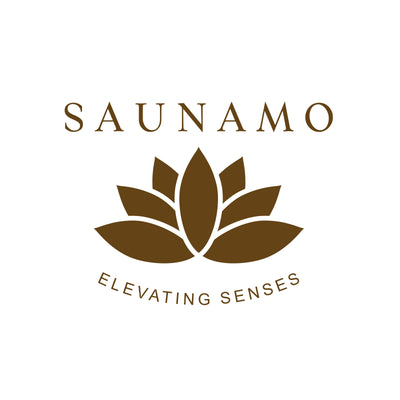Immersion in hot water (such as relaxing in a hot tub) can significantly increase core body temperature, mimicking many of the effects of moderate aerobic exercise.
Thermal therapies such as saunas and hot baths have long been used for relaxation and well-being. But a recent study has put these methods head-to-head, comparing a soak in hot water (at 40.5 °C) with a traditional dry sauna at 80 °C and an infrared sauna (between 45 °C and 65 °C), to see which one provides greater cardiovascular and immunological benefits. The results are surprising: soaking in hot water increased core body temperature more and generated a stronger cardiovascular and immune system response than any type of sauna. In practice, a hot tub session can act as a "passive exercise", lowering blood pressure and increasing circulation, in a similar way to moderate physical exercise.
In this article, we'll look in detail at the study's findings - from blood pressure and cardiac output to immune cell activation - and explain the practical implications for health. You'll understand why that hot water immersion beats saunas in some respects and when you can choose one or the other depending on your health goals.
Key Findings: Hot Water Immersion vs. Saunas
-
Increase in Core Body Temperature: Immersion in hot water (40.5 °C for 45 minutes) caused the greatest increase in core body temperature - around +1.1 °C - much higher than the +0.4 °C of the traditional sauna and practically no change with the infrared sauna. In other words, hot water caused a much greater thermal load than dry air or infrared radiation.
-
Cardiovascular response: Being submerged in hot water caused the greatest increase in cardiac output (volume of blood pumped by the heart per minute), with an increase of approximately +3.7 L/min. In comparison, the traditional sauna increased output by +2.3 L/min, and the infrared sauna by only +1.6 L/min. This means that the heart worked harder in the hot water - pumping more blood - in a similar way to aerobic exercise.
-
Lower Blood Pressure: Hot water immersion also lowered blood pressure more than sauna sessions.
-
Immune Stimulation (IL-6): Immersion in hot water was the only condition that caused a notable increase in interleukin-6 (IL-6), an inflammatory cytokine associated with physical exercise and activation of the immune system.
-
Activation of Immune Cells: 24 hours after the hot water session, participants showed increased levels of NK (natural killer) cells and cytotoxic T lymphocytes (CD8+) - key cells in the defense against viruses and tumors. This effect lasted up to 48 hours in the case of T cells.
-
Comparison Summary: Overall, a single hot water immersion session provoked the greatest thermal load, cardiovascular response and immune activation compared to the traditional dry sauna and the infrared sauna. The infrared sauna was the least intense - it failed to significantly increase body temperature or provoke relevant cardiovascular or immune changes.
The Study: Hot Bath vs. Traditional Sauna vs. Infrared Sauna
The study, conducted by the University of Oregon and published in 2025 in the American Journal of Physiology, was the first to directly compare the acute effects of three forms of passive heat therapy on the same group of participants.
Methodology:
-
Participants: 20 healthy young adults (10 men and 10 women), active and non-smokers, aged between 20 and 28.
-
Conditions tested:
-
Immersion in hot water: 40.5 °C for 45 minutes (bath covering the body up to the neck).
-
Traditional dry sauna: 80 °C, three 10-minute sessions with cooling breaks in between.
-
Infrared sauna: between 45 °C and 65 °C for 45 minutes.
-
The researchers measured core body temperature, heart rate, blood pressure and cardiac output throughout each session. They also took blood samples before and after the sessions (and again 24 and 48 hours later) to assess IL-6 levels and immune cell counts.
Hot Bath: A Passive Workout for the Heart
During the 45-minute immersion in water at 40.5 °C, the participants showed:
-
Significant increase in core body temperature (+1.1 °C)
-
Increased cardiac output (+3.7 L/min)
-
Reducing blood pressure
-
Acute increase in IL-6
-
Increase in NK and CD8+ cells in the following 24-48 hours
This type of physiological response is similar to that caused by moderate-intensity training. The heat of the water, combined with the hydrostatic pressure, causes the body to react in a similar way to physical exercise: the heart pumps more blood, the vessels dilate, sweat increases (but does not evaporate), and the internal temperature rises continuously.
Traditional Sauna: Intense Heat, Moderate Effects
The dry sauna (80 °C for 3×10 minutes) also caused physiological changes:
-
Moderate increase in body temperature (+0.4 °C)
-
Increased cardiac output (+2.3 L/min)
-
Slight reduction in blood pressure
-
No significant changes in IL-6 or immune cells
Despite offering cardiovascular benefits, the heat load was lighter than in the hot bath, and the body was better able to regulate its temperature through sweat and breaks between sessions.
Infrared Sauna: Comfortable but Lightweight
The infrared sauna was the most gentle of the three:
-
Body temperature practically unchanged
-
Modest increase in cardiac output (+1.6 L/min)
-
No changes in blood pressure or immune system
The sensation is comfortable, but the physiological impact is reduced - ideal for those looking for relaxation without intense cardiovascular or thermal effort.
Why is Hot Water So Effective?
-
Thermal conductivity: Water transfers heat 25 times faster than air. Even at a lower temperature, it warms the body more quickly.
-
Ineffective sweating: In water, sweat doesn't evaporate - so it doesn't cool the body. This causes a continuous build-up of heat.
-
Hydrostatic pressure: Water exerts uniform pressure on the body, helping venous return and increasing the volume of blood that reaches the heart.
-
Continuous session: Unlike saunas (which have breaks between rounds), the immersion was continuous for 45 minutes, maximizing the thermal effect.
Immunological Benefits: Activating Natural Defense
Only immersion in hot water caused it:
-
Increase in IL-6 (inflammatory cytokine associated with adaptive responses)
-
Increase in NK and CD8+ cells, essential for eliminating viruses and tumor cells
These effects mimic the benefits of intense exercise. The traditional sauna and the infrared sauna did not provoke these responses, probably because they did not reach a sufficient thermal load.
When to Choose a Sauna or a Hot Bath?
| Well-being Objective | ✅ Traditional sauna | Infrared sauna | ✅ Hot Bath / Spa |
|---|---|---|---|
| Cardiovascular support | ✔✔✔ | ✔✔ | ✔✔✔ |
| Stimulation of the immune system | ✔✔✔ | ✔✔ | ✔✔✔ |
| Relaxation and stress relief | ✔✔✔ | ✔✔✔ | ✔✔✔ |
| Muscle recovery | ✔✔✔ | ✔✔ | ✔✔✔ |
| Heat sensitivity | ✔✔ | ✔✔✔ | ✔ |
Caption:
✅ = Especially effective
✔✔✔ = Strong benefit
✔✔ = Moderate benefit
✔ = Slight or indirect benefit
Conclusion: Heat is Health
If you're looking for an effective way to support the cardiovascular system, boost the immune system, relieve stress and improve muscle recovery, heat therapy is a natural and powerful solution.
Research shows that both hot water immersion and sauna use have significant short-term physiological effects, including increased heart rate, improved circulation and lower blood pressure. When practiced regularly, both methods are associated with long-lasting health benefits, such as boosting cardiovascular function, reducing inflammation, improving sleep quality and increasing general well-being.
"I have no doubt that if people are willing to do heat therapy, it will align with improved health - as long as it's done in moderation."
- Dr. Christopher Minson, co-author of the study
In the end, the best choice is the one you can integrate into your routine. Whether it's the dry intensity of a traditional sauna, the gentler heat of an infrared sauna or the immersive tranquillity of a hot bath, creating a consistent habit of exposure to heat can become an essential pillar for your long-term health.


